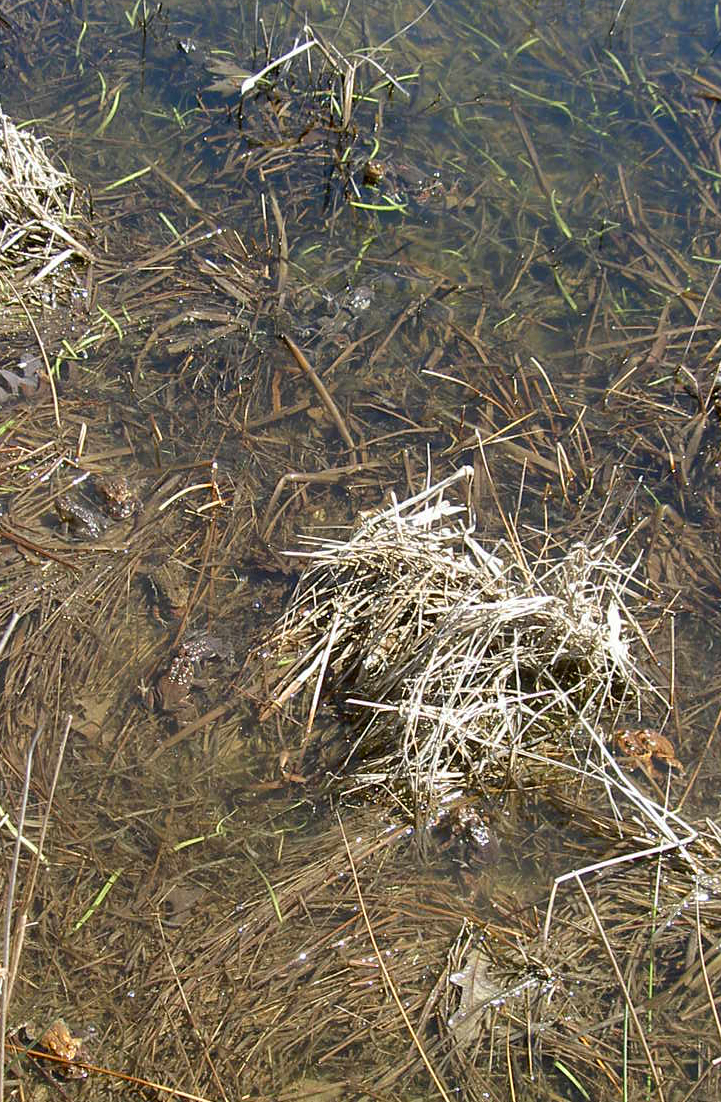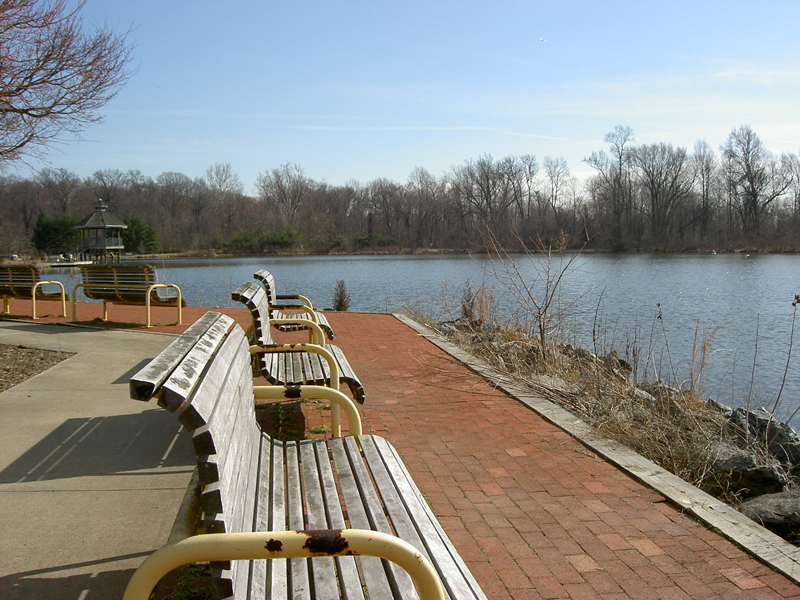In order to try to catch sight of some of the migrating warblers coming through this area, I visited Lake Artemesia at what seemed like an unreasonably early — and cold! — hour this morning: 7:00am. When I first arrived, only the larger birds were active: Cardinals, Blue Jays, Robins, Mockingbirds, and Starlings were all making loads of noise, as well as a single male Eastern Towhee camped out at the top a tree singing its little heart out. Out on the water, a bunch of Coots, several pairs of Canada Geese, and the threesome of Wood Ducks were paddling around (there must be another male around somewhere, right?). By the time I reached the bridge to the peninsula, though, the smaller birds were starting to get going: I saw a goldfinch, loads of chickadees, and a Tufted Titmouse. Just over the bridge, I was geeked to see a Green Heron up in a tree. I know, intellectually, that they nest in trees, but it still strikes me as odd to actually see them up in the branches. I was also unduly excited to spot a Snapping Turtle in the lake near the bridge. It wasn’t as impressively large as the one I saw at the University Hills pond last year, but it was large enough to be clearly identifiable, especially with its long tail in view.
The peninsula yielded two new life birds, although not any of the warblers I was hoping to see. Near the restrooms I found a Field Sparrow, a bird I’d been told was around but had yet to spot. Nearby, along one of the ‘paths’ cut into the grass, I discovered a small group of Savannah Sparrows. They were neat, with their yellow head stripes and lovely streaky colors. The flash of yellow gave me hope that I had found a warbler, but I was just as pleased to find a type of sparrow I would never have been looking for. I did see some warblers in the trees along the bank of the peninsula, but only Yellow-Rumped ones. I spotted a Blue-Gray Gnatcatcher catching gnats and the male Bluebird hovering around yet another new nesting box; I suspect that he keeps getting bullied away from the boxes by the Tree Sparrows, and I’m hoping that doesn’t mean the pair will move on completely.
I wasn’t too bent out of shape about not seeing any new warblers, as I’ve already seen two new ones at Patuxent this month: a single Pine Warbler and a few Palm Warblers; the latter were traveling with a large group of Yellow-Rumped Warblers, as I was told they likely would be. In a stroke of luck, I completely lost track of time and was sitting on a bench on the lake trail after the trails were supposed to be closed, which was exactly the point in the late afternoon when all the little insect eating birds became active again. I think I also saw a Black-Throated Green Warbler, but I wasn’t able to conclusively identify it. It wasn’t until the ranger directed me to return to the parking lot, via the bullhorn on the jeep from across the lake, did I realize how late it had gotten.
The Pine Warbler sighting was the result of sheer determination, and not a little neck-crunching. I had taken my partner up to Patuxent to show him some of the birds I’d seen there that were new to him (namely the bluebirds and the loon that had been hanging out on the lake), and we doggedly tracked the noisy little bird through the woods and then he stood patiently by while I peered at the very tops of the tallest trees following the little blur of yellow. In the end, I confirmed the identification by behavior, which seems to be the case more frequently as I move out of the most common birds into the still-pretty-common-in-the-right-habitat birds. Which is why I’ve switched to using Sibley’s as my primary guide: I find the behavior, habitat, and song descriptions to be more thorough and easier to understand than in Peterson’s.
In an effort to keep adding mostly-common birds to my lifelist, we’re planning to visit Bombay Hook this weekend to try to see the shorebirds that should have returned by now. I imagine it will be quite busy on a weekend afternoon, but I’m looking forward to it.

